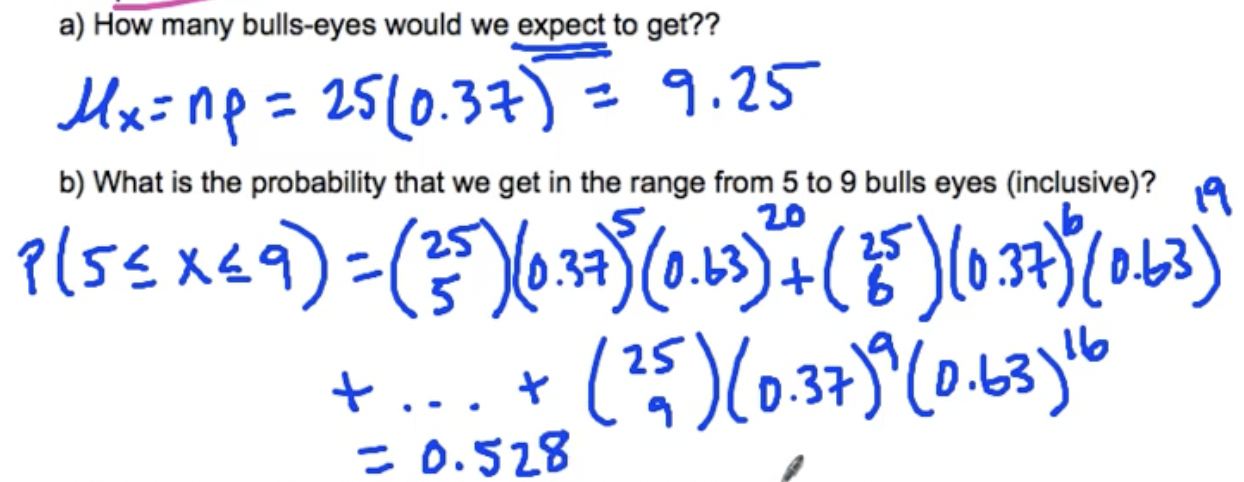6.2: Binomial and Geometric Probability
Binomial Distributions
- A setting is considered binomial if the four following criteria are met
- B: Binary
- Trials must be able to be categorized as successes or failures
- I: Independence
- Trials must be independent from one another
- N: Number
- There must be a fixed number of trials
- S: Success
- There must be a constant probability of success for each trial (represented by variable p)
- Binomial random variables meet all four of these conditions, and are described by binomial distributions
- B(n,p) means that there is a binomial distribution where x counts the number of successes
- n = number of trials/observations
- p = probability of success
- x can only take on whole number values from 0 to n
- Mean and standard deviation for binomial random variables
- µ = np
- σ = square root of np(1-p)
Formula for Binomial Predictability

- This means that:
- Out of n trials, there are k successes
- n choose k counts the number of ways to have successes in n trials
- p^k calculates the number of times k succeeds
- (1-p)^(n-k) calculates the number of failures
- Calculator use
- Particular success = binomPdf
- Eg. P (x=5)
- Cumulative success = binomCdf
- Eg. P (x<5)
- P(1<x<12)
- Menu 6→5→D/E
- Must show equations + work on paper to reflect what is done on calculator for credit on tests + AP exam
Example
The probability of hitting a bullseye while playing darts is 0.37
We are going to throw 25 darts and count the number of bullseyes.
Each throw is independent.

Geometric Distributions
- Meet all of the criteria for binomial probabilities except there is no set number of trials → they are continued until failure
- If x is geometric, p is the probability of success, and 1-p is the probability of failure, then:
- P(first success on nth trial) = (1-p)^(n-1) x (p)^1
- We succeeded once (on the last trial) and failed every time before that
- P(success takes more than n trials) = (1-p)^n
- We only know we failed this many times
Example
